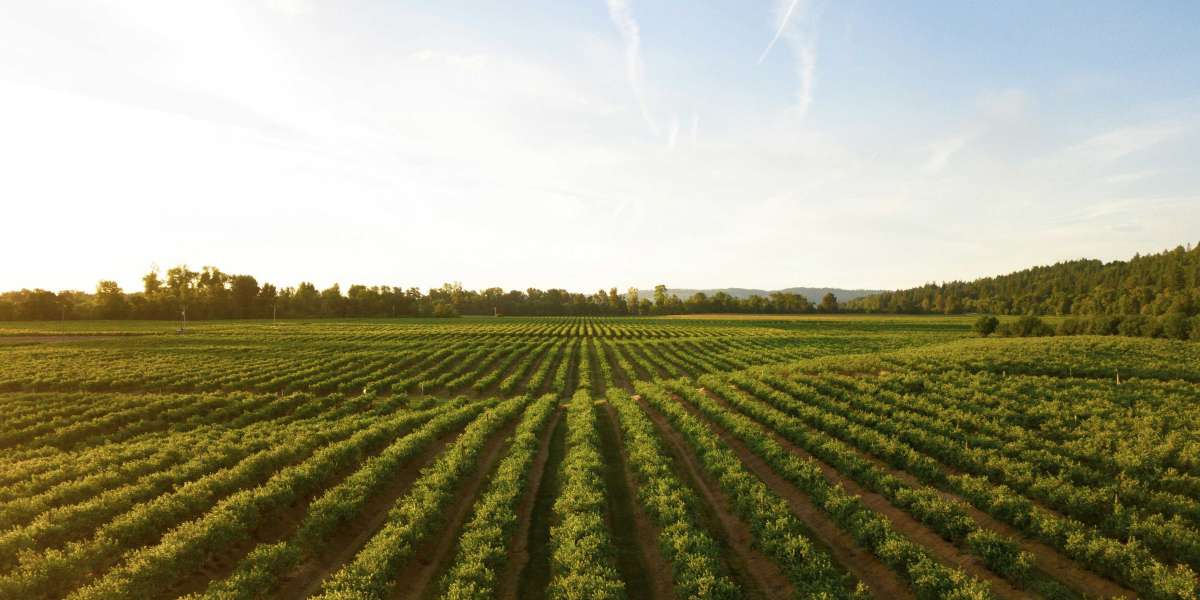Modern agriculture is a careful balance of biology, soil chemistry, and smart decision-making. As farmers navigate the demands of higher yields, climate unpredictability, and soil fatigue, one powerful yet often overlooked ally emerges: humic acid. This organic soil amendment is transforming root systems beneath the surface, leading to robust plant health above it. In Humic Acid Elevate, we delve into the science and strategic use of humic acid to unlock the full potential of your crops.
With digital farming platforms like the khedut app, real-time guidance and soil condition monitoring are now accessible to even small-scale farmers. By aligning humic acid application with tools like Agro Weather Updates and Crop Health Diagnosis, growers can maximize efficiency and avoid overuse. Farmers can explore region-specific product solutions through the Agribegri app, which offers a well-organized selection under the Humic Organic Soil Enhancers category for different crop needs and soil types.
For example, during seedbed preparation for wheat or maize, a grower can use humic acid granules combined with compost, while later supplementing with liquid formulations during vegetative growth. This dual strategy strengthens root anchorage and improves nutrient absorption, especially in lateritic or saline soils.
Why Humic Acid Matters: Rebuilding Soil from the Roots
At its core, humic acid is a naturally occurring compound extracted from decomposed organic matter, primarily leonardite or lignite coal. It is rich in carboxyl and phenolic groups, which bind essential nutrients and enhance soil's cation exchange capacity (CEC). This improved nutrient retention creates a nurturing zone around roots, often referred to as the rhizosphere advantage.
Beyond just nutrients, humic acid:
- Stimulates microbial activity that enhances root branching and elongation
- Increases the plant’s resistance to abiotic stress like drought and salinity
Such benefits are particularly valuable in India's increasingly erratic climatic conditions, where root health directly correlates to yield resilience.
Top Humic Acid Products and Their Strategic Applications
Farmers now have access to multiple forms of humic acid, each with distinct applications. Selecting the right one depends on crop stage, soil texture, and delivery method (drip, foliar, or soil application).
- Humic Acid Liquid (12% concentration)
Typically used in high-value crops like pomegranate, banana, and floriculture, this formulation is best applied through drip irrigation systems. It promotes quicker nutrient uptake and root cell differentiation during early vegetative stages. Farmers are advised to dilute 1–2 ml per liter and apply bi-weekly. Overuse, especially in heavy clay soils, may lead to nutrient lockup if not alternated with organic inputs. - Granular Humic Acid (slow-release)
Ideal for field crops such as groundnut, wheat, and soybean, these granules are mixed into the topsoil during sowing. They slowly decompose and enrich the rhizosphere over a 4–6 week period. Farmers in rain-fed zones prefer this type due to its longer soil presence and moisture-retention properties. - Humic Acid with Amino Acids Blend
This product is a dual-action booster often used in horticulture. The amino acids stimulate protein synthesis in plants, while humic acid improves nutrient availability. This combination works especially well during flowering and fruit development in crops like grapes and tomatoes. Foliar application is common, though it must be done under low sunlight to prevent phytotoxicity. - Potassium Humate 98% Crystalline Flakes
This high-purity form is a favorite among progressive farmers and organic practitioners. It’s soluble in water and often used in fertigation systems. A small quantity (0.5–1 g per liter) is sufficient to activate microbial colonies and improve soil porosity. However, this premium product may be cost-prohibitive for large acreage unless used in combination with organic compost.
"Healthy roots don’t just anchor plants — they anchor the future of food security. In the depth of soil lies the true power of agriculture."
Tech-Enabled Application for Maximum Impact
Thanks to intelligent platforms like the agri app, farmers no longer need to guess the timing or dosage of their humic acid applications. These apps synchronize with weather models and crop calendars, offering precise advisory based on real-time data. For example, Agro Weather Updates may alert farmers of upcoming rainfall, guiding them to apply humic granules just before showers for optimal incorporation.
Likewise, Crop Health Diagnosis tools analyze foliage symptoms and root zone data to indicate potential nutrient imbalances. In such cases, humic acid enriched with micronutrients (like boron or zinc) may be recommended for correction, often preventing the need for synthetic fertilizers.
Moreover, digital recommendations ensure that farmers use humic acid not as a one-time input but as part of an integrated soil management plan — combining it with green manures, microbial inoculants, and composted matter for holistic soil regeneration.
Quantified Results from Field to Farm
Recent agronomic trials and farmer-led initiatives have shown compelling outcomes. In a 2023 survey across Maharashtra’s sugarcane belt, farms using granular humic acid during land preparation reported:
- 17% increase in root length density
- 21% improvement in nutrient uptake efficiency
- 12% reduction in irrigation frequency due to enhanced moisture retention
Another trial in Karnataka’s tomato fields revealed that potassium humate application led to early flowering and better fruit uniformity — two key parameters influencing market price.
These results underline the importance of rhizosphere optimization — an area too often neglected in fertilizer-centric farming models. As humic acid elevates root zone health, plants grow not just bigger, but smarter — with better stress response, efficient resource use, and improved immunity.
Addressing Misconceptions and Limitations
While humic acid offers multiple advantages, it’s important to address a few caveats:
- It is not a replacement for fertilizers but a facilitator of nutrient absorption.
- Overapplication, especially in closed irrigation systems, can lead to biofilm formation or pump clogging.
- Effectiveness diminishes if the soil is already chemically compacted or highly acidic (pH 5.5).
Hence, soil testing and precision guidance — readily available on platforms like the khedut app — are vital for achieving optimal outcomes.
Innovation and Farmer Engagement: A Future Rooted in Science
The surge in humic acid adoption is also driven by farmer-to-farmer knowledge sharing and participatory research. WhatsApp groups, YouTube channels, and app-based discussion boards have become dynamic arenas for feedback loops. Farmers are not just consumers; they’re co-researchers in the evolving science of soil enrichment.
An inspiring example comes from a farmer in Bhopal who tested a custom blend of humic acid, fish amino acid, and jaggery in his organic marigold field. He reported a 35% increase in flower size and shelf life, which significantly boosted local market sales. His formula has now been featured in a community learning module within the agri app ecosystem.
Take the Next Step Beneath the Surface
This conversation doesn’t end here — it takes root where your field begins. The next time you prepare your land or feed your crop, ask yourself not just what you’re adding to the soil, but how it nurtures the living world underneath.
Download your local farming advisory app, sync with weather data, and trial a humic acid formulation tailored to your crop. Experiment with timing, explore new combinations, and document the changes. Observe how stronger roots transform not only your yields but your soil, your sustainability, and your future.


